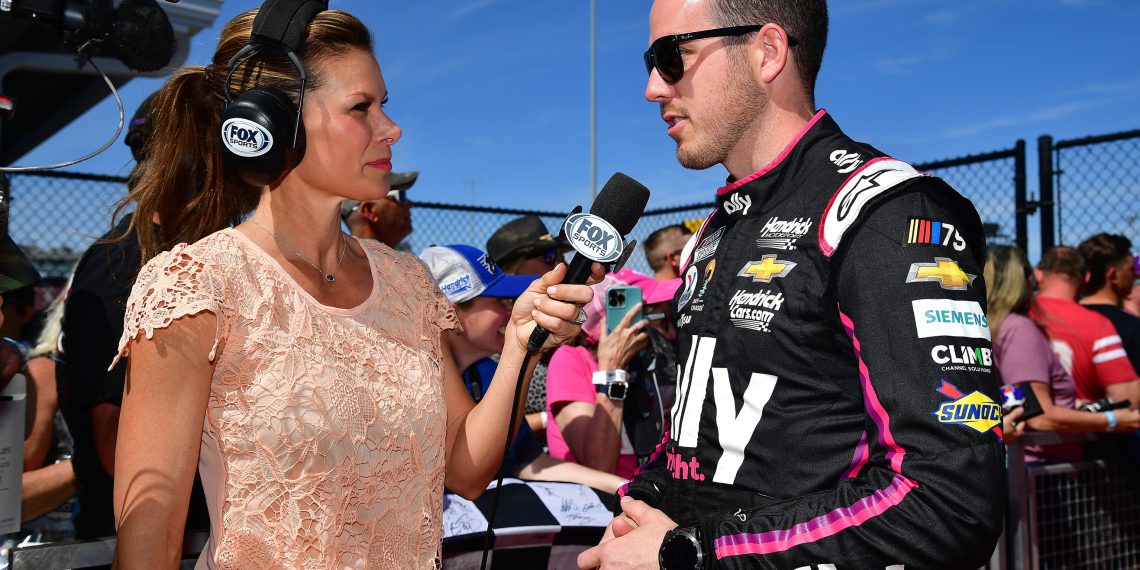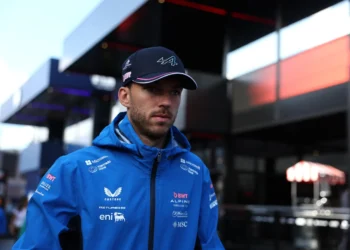Remote broadcasting has rapidly evolved from a pandemic-era necessity to a cost-saving strategy favored by major sports networks. But for NASCAR fans, the trend has become a flashpoint, raising concerns about authenticity and the quality of the viewing experience. With key broadcast partners like FOX Sports and The CW embracing remote production, the practice is now driving a wedge between networks and the sport’s passionate fanbase.
Jamie Little’s Honest Admission Fuels Fan Frustration
Veteran FOX Sports reporter Jamie Little unintentionally reignited the controversy during a recent Q&A on X (formerly Twitter). Responding to a fan’s question about remote broadcasts for the Truck and ARCA series, Little candidly admitted, “Remote production is here to stay and only going to grow. That’s the case for multiple sports and network cable channels.”
While her transparency was appreciated, the backlash was immediate. NASCAR fans, long critical of remote broadcasting, expressed their dissatisfaction across social media, arguing that the practice dilutes the energy and authenticity of live events. “It’s not the same when broadcasters aren’t at the track,” one fan lamented, echoing a widespread sentiment.
The CW’s NASCAR Partnership Adds Fuel to the Fire
The controversy has intensified as The CW prepares to take over exclusive coverage of the NASCAR Xfinity Series starting in 2025. Reports suggest the network is considering remote broadcasts for select races, with core production teams working from NASCAR’s $53 million facility in Charlotte, North Carolina, while pit reporters and some staff remain on-site.
During the deal’s announcement, CW President Dennis Miller sought to reassure fans: “We can’t wait to give racing fans an early preview of all the exciting action the NASCAR Xfinity Series has to offer on The CW.” Despite these promises, skepticism abounds. Fans fear that remote broadcasting will prioritize cost-cutting over delivering the immersive, on-the-ground coverage NASCAR deserves.
Why Remote Broadcasting Stings for NASCAR Fans
Unlike other sports, NASCAR’s unique atmosphere—thunderous engines, roaring crowds, and dramatic pit stops—is central to its appeal. For fans, broadcasters who experience these events in person provide an irreplaceable connection to the action. Remote production, critics argue, creates a disconnect that diminishes the excitement.
“You can’t replicate the feel of being at the track from a studio,” said one fan. Broadcasters themselves have echoed this sentiment in the past, with some admitting that being on-site enhances their ability to deliver insightful and dynamic commentary.
Balancing Efficiency with Authenticity
For networks, remote broadcasting offers undeniable benefits: reduced travel costs, streamlined operations, and flexibility. These advantages are particularly appealing for secondary series like the Truck and ARCA races, where budgets are tighter. However, the question remains—at what cost to the fan experience?
The CW and FOX Sports face a delicate balancing act. As NASCAR seeks to grow its audience, delivering high-quality, authentic broadcasts will be crucial. Fans expect coverage that captures the heart and soul of the sport, and any compromise risks alienating a loyal but vocal community.
What’s Next for NASCAR Broadcasting?
The expansion of remote production is a clear sign of the times, but networks must tread carefully. If implemented thoughtfully—with robust on-site coverage to complement remote teams—it’s possible to strike a balance that satisfies both financial realities and fan expectations. However, the skepticism surrounding remote broadcasting underscores a critical truth: for many fans, there’s no substitute for authenticity.
As NASCAR enters a new era of broadcasting partnerships, the challenge will be ensuring that efficiency doesn’t come at the expense of the passion and connection that define the sport.













